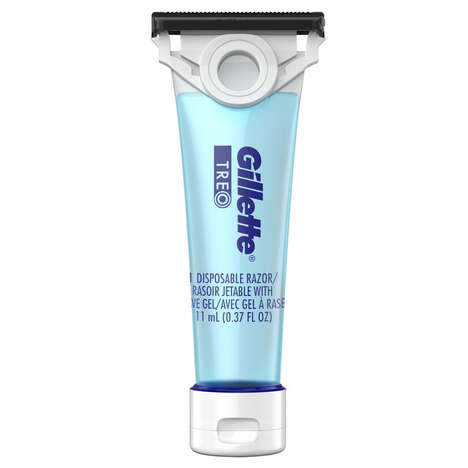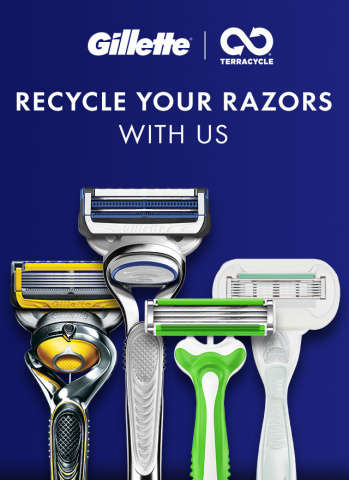Creating the First Assistive Razor
An Interview with Gillette's TREO Co-Founder, Peter Ries
Related Trend Reports
Activism, Art & Design, Business, Commercials, Cosmetics, Fashion, Life, Marketing, Social Business, Social Media


Can you tell us a little bit about yourself and your role at Gillette?
My name is Peter Ries and I’ve been with Gillette for over 11 years now in a variety of different R&D roles. I started as a process engineer after graduating as a chemical engineer from Northeastern University, but I’ve since moved into product research. I sit at the interface between the technical and business teams, and am focused on understanding what our consumers need when it comes to grooming, how Gillette can meet those needs, and the best ways to communicate this to the consumer.
What prompted the brand to take this step–why is this so important?
We noticed a conversation happening on social media about day-to-day challenges families face when caring for a loved one–and one of those challenges was shaving. After talking to consumers, we learned that shaving someone else with a traditional razor can be a daunting, messy and uncomfortable experience for both the person shaving and the one being shaved. This began the journey of developing a product that would address this genuine consumer need and as a result, we introduced Gillette TREO, the first razor designed to shave someone else, created specifically for caregivers and their loved ones. We know there are more than 8 million caregivers in Canada, and 22% of those caregivers support loved ones by assisting with personal care activities, like shaving. So, the need for a razor like TREO is significant. Gillette is committed to helping every man look his best, so he can feel his best, and with TREO we are ensuring this is especially true for those who are often forgotten.
What went into the design process for the TREO?
We recognized that shaving is one of those challenging tasks that caregivers are facing day-to-day and it can be an especially challenging task for people that are not familiar with shaving even their own face, which is the case for many women that end up taking on the caregiver role. As we saw that, our very passionate and dedicated R&D team began prototyping new products that could help with that problem, and partnered with nursing homes to pilot the products.
Through the prototyping and conversations with caregivers, we decided to focus on three important elements for the TREO razor: safety, control, and convenience.
How does the design of the razor allow caregivers and their loved ones to have a better shaving experience?
For safety, Gillette TREO has a specially designed blade with a safety comb. The comb is at the same height as the blade as you’re shaving. Whereas most razors have the blades slightly above the surfaces around it to get the closest possible shave. With safety being such a priority, we keep the blade height the same as the safety comb to allow the hairs to travel through the comb, but also help protect the skin from nicks and cuts. The comb’s innovative open design also prevents clogging, which means that rinsing is optional, thus removing the need for a source of running water.
The second key benefit that we were really targeting to help caregivers during a shave is control. We changed the way that you can hold the razor to make it more ergonomic for the job that you’re trying to do. The Gillette TREO is designed to be held like a painter holds a paintbrush. The pivot on the razor helps to ensure good contact between the blade and the face. We found this to be the most comfortable and efficient grip for completing the job of shaving someone else.
The last benefit is about convenience. There is a special non-foaming shave gel built into the handle offering an “all in one” solution. This shave gel can be used without water, so you don’t need access to running water during the shave. It doesn’t foam up when you apply it which is great when you are shaving someone else because you can see the surface that you are shaving over, helping you to take care over sensitive areas. The gel also provides a nice glide throughout the shave, helping to make it more comfortable.
How have consumers responded to the product so far?
We’ve been on the market in the US since August of last year and we’re seeing a lot of the same feedback that we’ve received throughout the entire innovation process of Gillette TREO. Most importantly what you’re seeing is that you’re taking what can be a very challenging and scary experience for the caregiver and giving them a way to do a job under a less stressful environment.
We’re proud to be able to offer Gillette TREO as a solution for caregivers in Canada, which will hopefully make a small but meaningful difference in their daily routine.
References: gillette
Featured Articles

Razor Blade-Protecting Devices
The SteelBee Razor Saver Triples the Life of Shaving Blades

Lunar Surface-Inspired Razors
The Gillette Apollo Celebrates the Namesake Moon Landing

Inclusivity in Brand Storytelling
An Interview with Gillette's Brand Director Pankaj Bhalla

Designing for Sensitive Skin
R&D Scientist Nick Harrington Explains How SkinGuard Razors Work

Powerful First Shave Films
Gillette's 'First Shave' Follows a Trans Man's Shaving Journey

Caregiver-Specific Shaving Campaigns
Gillette TREO Launched the 'Together, It All Works' Campaign

Razor Recycling Initiatives
Gillette and TerraCycle Partner to for a Canadian Recycling Program

Collaborative Designer Razors
Gillette Venus & Vera Bradley Launched Razors with a Paisley Print

Military-Themed Deodorant Campaigns
Gillette Honors Military Heroes with the Every Hero Sweats Ad